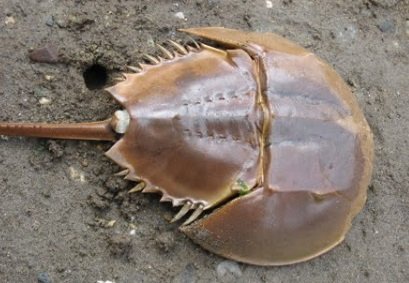In a groundbreaking move for marine conservation, the Zoological Survey of India (ZSI) and the Odisha Forest Department have embarked on a pioneering project to tag horseshoe crabs along the Odisha coast. This initiative marks the first time India has taken such dedicated action to protect these ancient creatures, whose populations are alarmingly declining.
The Significance of Horseshoe Crabs
Horseshoe crabs are often referred to as “living fossils” due to their extraordinary resilience and survival over 450 million years, enduring five mass extinctions. These remarkable creatures are not just a window into Earth’s distant past but also play a crucial role in modern medicine. The unique blue blood of horseshoe crabs contains a substance called Limulus Amebocyte Lysate (LAL), which is indispensable for testing the safety of vaccines, intravenous drugs, and medical devices by detecting bacterial contamination. This makes horseshoe crabs not only vital for ecological balance but also for human health.
Horseshoe Crabs in India: A Biodiversity Treasure
India is home to two species of horseshoe crabs: Tachypleus gigas, predominantly found along the Odisha coast, and Carcinoscorpius rotundicauda, inhabiting the Sundarbans mangroves of West Bengal. Both species are legally protected under India’s Wildlife Protection Act of 1972, reflecting their ecological and medicinal importance. Despite this protection, the populations of these species have been dwindling due to various human activities, necessitating urgent conservation efforts.
Challenges Facing Horseshoe Crabs
The primary threats to horseshoe crabs stem from unsustainable and harmful fishing practices. Destructive fishing nets and illegal smuggling have significantly contributed to the decline in their numbers. These activities not only disrupt the crabs’ natural habitats but also increase mortality rates, putting these ancient species at risk of extinction. The growing demand for their blood in the biomedical industry further exacerbates these threats, highlighting the need for robust conservation strategies.
The Tagging Program: A Ray of Hope
In response to these challenges, the ZSI and Odisha Forest Department have initiated a tagging program, which involves attaching small, harmless tags to horseshoe crabs. This method allows researchers to monitor the crabs’ movements, understand their population dynamics, and identify critical habitats essential for their survival. To date, 70 horseshoe crabs have been tagged, with plans to tag hundreds more over the next three years. The data gathered from this program will be instrumental in formulating effective conservation strategies and management plans.
Collaborative Efforts for Conservation
This conservation initiative is supported by Fakir Mohan University of Balasore and other marine biology experts, who are working together to mitigate the threats facing horseshoe crabs. A key focus of the project is to reduce harmful fishing practices, such as the use of destructive nets, which pose a significant threat to these species. In the long term, wildlife experts are advocating for the development of a comprehensive Species Recovery Plan. Such a plan would ensure the sustainable management and protection of horseshoe crabs, securing their future in India’s coastal and marine ecosystems.
Fascinating Facts About Horseshoe Crabs
- Horseshoe crabs are more closely related to spiders and scorpions than to crabs.
- Their blood is blue due to the presence of hemocyanin, which is rich in copper and helps transport oxygen.
- Horseshoe crabs have survived for over 450 million years, outlasting dinosaurs and surviving five mass extinction events.
- Instead of jaws, horseshoe crabs use special appendages called gnathobases to grind their food.
- They possess a unique ability to regenerate lost limbs, similar to starfish.
- Horseshoe crabs have multiple eyes, including some that can detect ultraviolet light.
- The medical importance of horseshoe crabs cannot be overstated; their blood is vital for testing the sterility of medical equipment and ensuring the safety of vaccines.
A Call to Action
The tagging of horseshoe crabs along the Odisha coast is a significant step forward in India’s conservation efforts. By understanding more about these ancient creatures and their habitats, India can develop stronger, more effective strategies to protect them from the threats they face. As we advance in science and medicine, it’s crucial that we also take steps to preserve the natural world that makes such progress possible. The conservation of horseshoe crabs is not just about saving a species; it’s about maintaining the delicate balance of our ecosystems and protecting a resource that is vital to human health.


